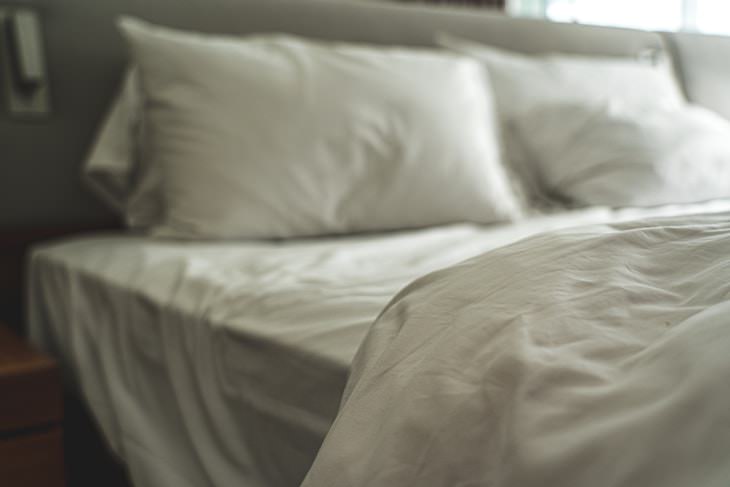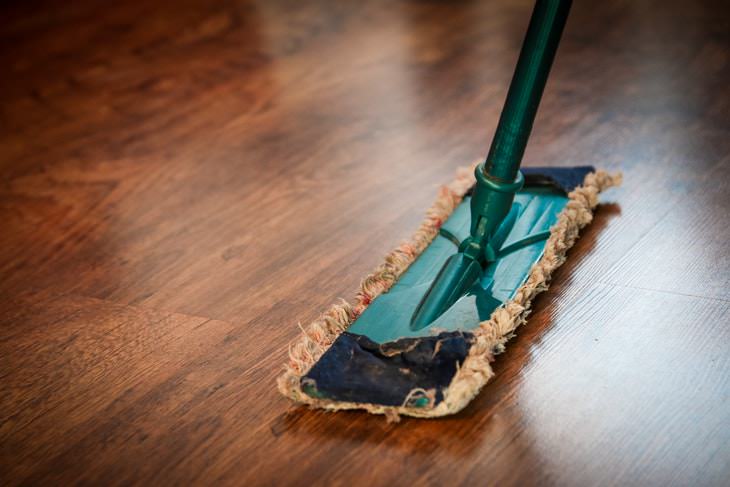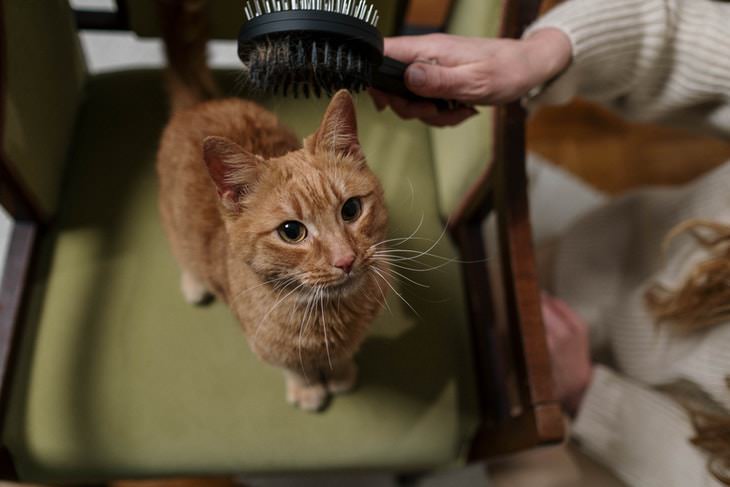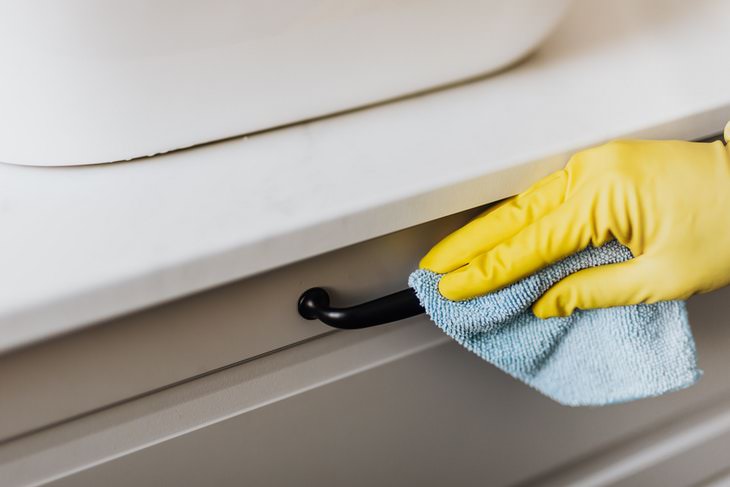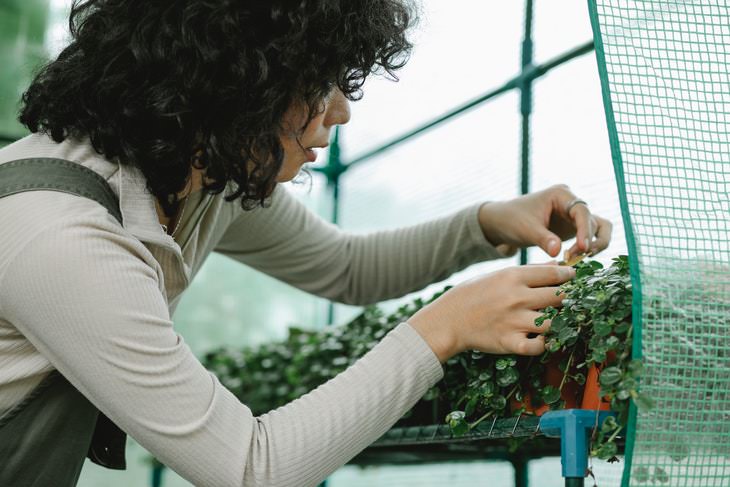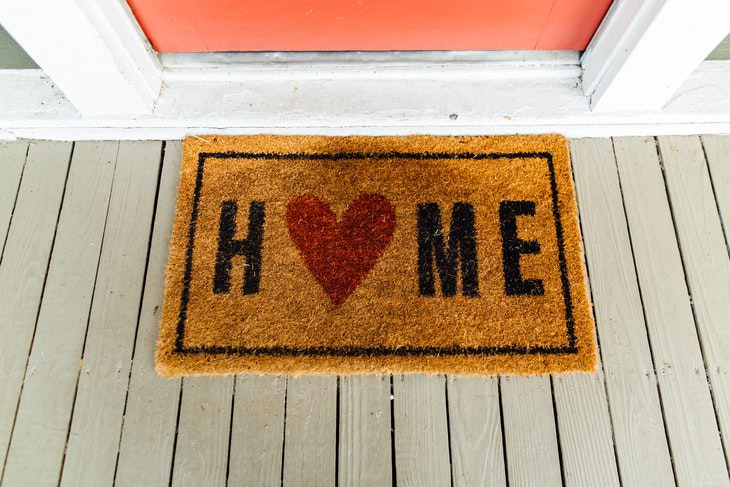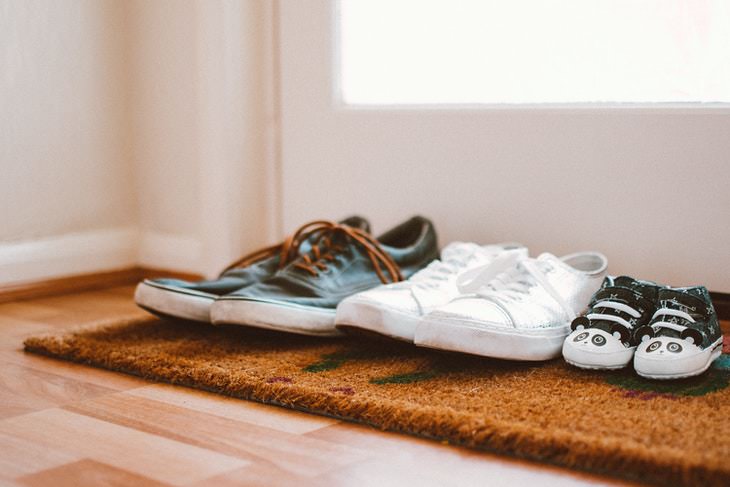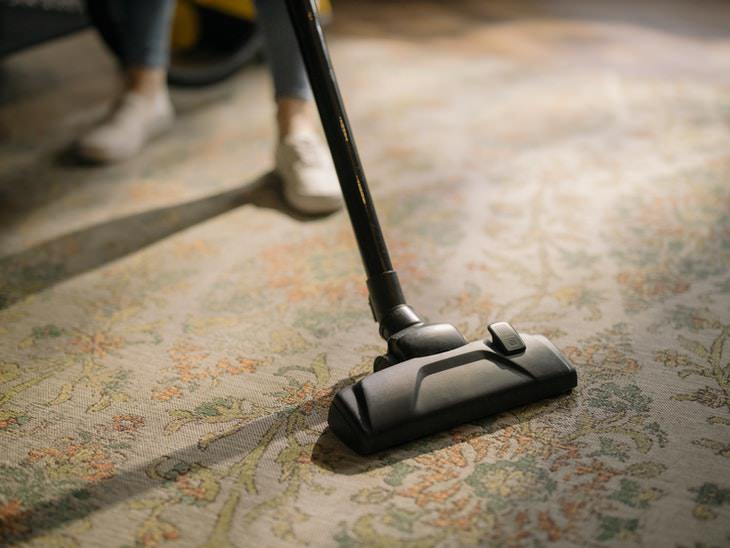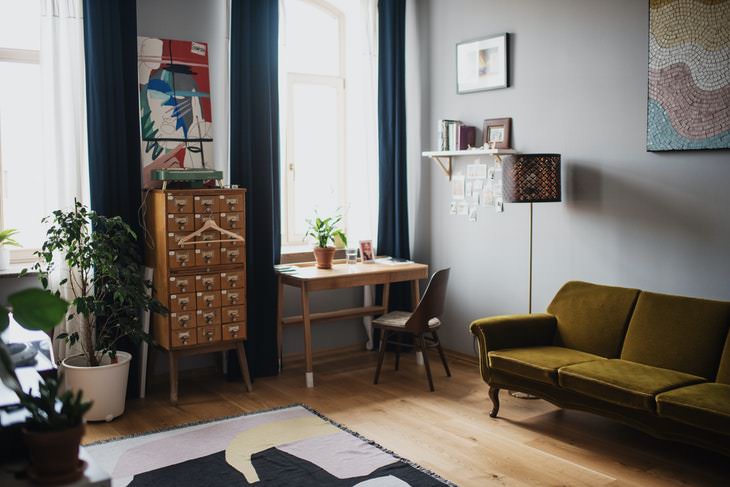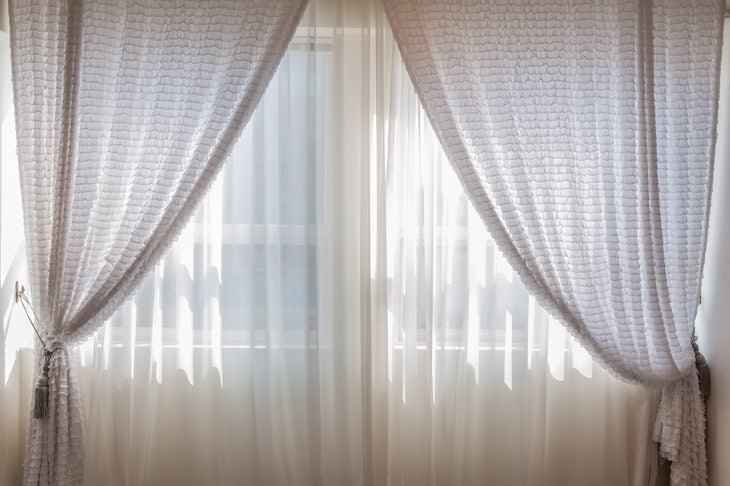1. Change your sheets every week and wash your pillows
Your sheets, pillows, and mattress are a real magnet for dust. This will sound quite creepy, but your bed probably has the highest number of dust mites in your entire home. The reason why is simple - dust mites feed on dead skin cells and pet dander. So, they tend to accumulate in places where we and our pets like to hang out and sleep. e.g. pet beds, the couch, and your bedding, pillows, and blankets.
For those who don’t know, dust mites are microscopic organisms that live in, you guessed it, dust. They can cause allergies, skin irritation, and a runny nose. So, it’s pretty important to wash your sheets weekly and cleaning your pillows, blankets, and mattress covers around 3 times every year in hot water. Not to mention that doing so will dramatically decrease the amount of dust in your home.
2. Mind the floor
Another common item in the home that can accumulate tons of dust is the carpeting. Rugs, carpets, and carpet flooring can all hold quite a lot of dust. And while you can easily take a small or medium rug or carpet outside and shake it or beat it with a broom every 1-2 months to get rid of all those dust and dirt particles, carpet flooring is much trickier to clean.
Steam-cleaning carpet flooring a few times a year can help, but you’ll likely also need a powerful vacuum (more on that later) to reduce the amount of dust in your home significantly. Whatever the case may be for you, be aware that your carpet may be the reason why dust accumulates in your home so fast.
If you’re allergic to dust or pets, you may even consider getting rid of carpets and rugs altogether to reduce your symptoms. But even if your floors are carpet-free, keeping them clean will prevent any dust from rising and settling on the furniture. Hence, it will also make your home a lot less dusty, too.
3. Groom your pets outdoors
Dust consists of a lot of different particles, such as clothing fibers, pollen, soil particles, and microorganisms, but human skin and hair, as well as pet dander and fur, are the major component. And while you cannot prevent your pets from shedding on a day-to-day basis, you can certainly reduce the amount of pet dander and hair by grooming your pets regularly.
But you can be even more clever than that, and brush your pets out on the porch or the balcony instead of doing so in your home. This way, you can minimize the amount of dander and hair in your home.
4. Use microfiber cloths
If you’re wondering why so much dust accumulates in your home and you’re using a feather duster at the same time, you just found your culprit. Dusting with a feather duster may be easier than using a cloth, but it's also not even nearly as effective. Don't get us wrong, feather dusters are an excellent tool for wiping down all those hard-to-reach places, such as ceiling lights, the corners of the room, and the spaces between the wall and furniture that tend to collect dust and cobwebs.
However, this contraption can't collect dust as well as a cloth, and all the dust ends up flying in the air, bound to settle onto the same surfaces you tried so hard to clean. Instead, we recommend using a damp microfiber cloth to wipe away the dust from all these surfaces that are within your reach and reserving a feather duster for those high-up and difficult-to-reach places in your home.
Unlike other fabrics and feathers, microfiber cloths attract and hold onto dust much better, especially when dampened. Machine washable ones are the best, as this way, you’ll be able to just throw the cloth in the washer after every use.
5. Care for indoor plants
Do you have a lot of indoor plants? If so, they could be contributing to your dust problem, too. Like any other item in your home, plants tend to accumulate dust over time. And just like any other item, they need to be cleaned to reduce the amount of said dust. The easiest way to do so is to simply transport all of the plants into the shower or a bathtub and rinse them generously with water every month or so.
If the plant is too big to be moved, you can take a clean damp cloth and simply wipe down every leaf individually. Not only will this practice keep dust away, but it will also help your plants stay healthy and look even more beautiful, so it’s worth the extra little effort.
6. Doormats are a must
Another way dust can get into your home is through your door. That’s why doormats are so essential. Just don’t forget to wipe off your feet before entering the house and also clean the mat occasionally. You can even double down on the mats and install one outside of the door and another one in front inside. This way, your shoes will be even cleaner once you step inside the house.
7. No shoes indoors
Speaking of shoes, do you wear them indoors, too? If so, we highly recommend getting in the habit of switching into a pair of slippers at home. This may seem like a minor detail, but the difference it makes is pretty dramatic. Simply have a little shoe shelf at the front door, and switch into slippers when you enter your home. You’ll be surprised at the amount of floor cleaning and dusting this will save you!
8. Choose the right vacuum filter and air filter
Not all vacuums are made equal, and the difference often boils down to the filtering system a vacuum uses. HEPA filters are considered to be the very best. According to the EPA, HEPA filters can remove at least 99.97% of dust, mold, bacteria, pollen, and other airborne particles. The same applies to any other air filtering system you’re using, be it an air purifier in your bedroom or kitchen, or the filters installed in your home's forced-air heating or cooling system.
If you noticed a higher-than-usual amount of dust in the home, for example, it may be time to replace your HVAC filter or air purifier filter. In general, this should be done every 3 months, but this could vary depending on the amount of pollution in your area, how much you use the system, and how many people and pets live in your home.
9. Keep the windows closed
The great outdoors is one of the major sources of dust and dirt in the home. So, it only makes sense that you’d ideally want to keep the windows and balcony doors closed to prevent those dust particles from getting into your home. Needless to say, you can still open the windows to air out the house occasionally, but if dust elimination is your ultimate goal, it’s best to keep those windows shut.
If you do insist on cracking at least a few windows in the house at night, when dust pollution is lower, do so in the rooms that are easier to clean like the bathroom or the kitchen.
10. Dirty curtains and blinds may be the culprit
Continuing the window theme, it’s important to note that curtains and blinds can end up accumulating quite a lot of dust, too. Hence, make sure to put those curtains in the washing machine every few months, and to clean the blinds on a regular basis using a dry microfiber cloth. If you see any sticky residue mixed with dust on the blinds, though, it’s better to use a microfiber cloth dampened in a mix of water and a drop of dish soap.
11. Keep your home clutter-free
This may be the last tip on this list, but it’s definitely one of the most important ones, so don’t ignore it. If you want to reduce the amount of dust in your home, it’s important to keep your home organized. The fewer old newspapers and junk mail are stacked on the side table, the fewer places for dust to accumulate.
The same rule applies to other places, be it the closet, the bookcase, or the kitchen counters. Avoid overcrowding your home with souvenirs, little trinkets, old clothes, and other stuff you don’t need or use. If you’re a collector, keep all the items you’ve accumulated in closed compartments, such as shelves or glass cabinets. This way, less dust will get into those compartments, and you’ll need to dust it less often.
Share these tips and tricks with others!

